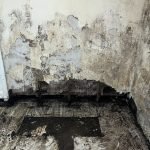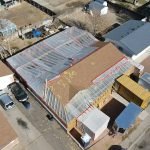
What Does Asbestos Look Like?
A Guide to Identification and Abatement
Asbestos is a naturally occurring mineral once widely used in construction materials due to its heat resistance and durability. However, it poses serious health risks when its fibers are inhaled, leading to conditions like asbestosis, lung cancer, and mesothelioma. Identifying asbestos in your home is crucial, but it can be challenging due to its various forms and the fact that it is often mixed with other materials. This article will guide you through what asbestos looks like, how to identify it, when to call a professional, the asbestos abatement process, and the most common forms of asbestos.
What Does Asbestos Look Like?
Asbestos fibers are microscopic and not visible to the naked eye, which makes identifying asbestos-containing materials (ACMs) tricky. However, asbestos is often found in certain materials and areas of a home, which can give you clues about its presence.
- Asbestos in Plaster: Asbestos was commonly mixed into plaster used for walls and ceilings in homes built before the 1980s. The plaster may have a textured appearance, often used to create decorative patterns like popcorn ceilings.
- Asbestos Drop Ceiling Tiles: Ceiling tiles containing asbestos are usually found in older homes, schools, and commercial buildings. These tiles often have a soft, fibrous feel, and are typically light gray or off-white. If you have an older home with drop ceilings, it’s essential to test these tiles for asbestos.
- Asbestos Shingles: Asbestos was commonly used in exterior shingles for its fire-resistant properties. These shingles may look like regular cement shingles but can be more brittle and have a rough texture.
- Asbestos Insulation: Asbestos was widely used in insulation materials, particularly in attics, around pipes, and boilers. Vermiculite insulation, for instance, often contains asbestos. It appears as small, pebble-like granules and is usually gray-brown or silver-gold.
Common Forms of Asbestos in Homes
Asbestos was used in various forms throughout residential and commercial buildings. The most common forms include:
- Chrysotile (White Asbestos): This is the most common form of asbestos and was widely used in insulation, roofing, and flooring materials. It has a curly, flexible texture.
- Amosite (Brown Asbestos): Often found in cement sheets and pipe insulation, amosite has a harsh, needle-like appearance.
- Crocidolite (Blue Asbestos): Known for its excellent heat resistance, crocidolite was used in high-temperature insulation. It has a fibrous, blue appearance.
- Tremolite and Actinolite: These forms of asbestos were not used commercially but can be found as contaminants in other minerals, such as vermiculite.
How to Identify Asbestos in Your Home
Identifying asbestos requires more than just visual inspection since asbestos fibers are microscopic. If you suspect that a material in your home may contain asbestos, it’s crucial to take the following steps:
- How to Test for Asbestos: The safest way to test for asbestos is to hire a professional asbestos abatement contractor, like Jenkins Environmental, who can take a sample and have it analyzed in a lab. DIY asbestos testing kits are available, but they carry the risk of asbestos exposure if not handled properly.
- Air Monitoring for Asbestos: If you suspect airborne asbestos fibers, air monitoring should be conducted by professionals. They will use specialized equipment to test the air quality and determine if asbestos is present.
- When to Call an Asbestos Abatement Professional: If you find or suspect asbestos in your home, do not disturb the material. Asbestos is most dangerous when its fibers become airborne, so it’s crucial to leave it undisturbed and call an asbestos abatement professional immediately.
The Asbestos Abatement Process
The asbestos abatement process is a thorough and regulated procedure designed to safely remove asbestos from a property. Here’s what you can expect when working with Jenkins Environmental:
- Assessment and Testing: The abatement process begins with a thorough assessment of the property to identify all materials that may contain asbestos. Samples are taken for lab analysis to confirm the presence of asbestos.
- Preparation and Containment: Before removal, the area is prepared to prevent asbestos fibers from spreading. This includes sealing off the area, turning off HVAC systems, and using negative air pressure machines.
- Asbestos Removal: Our trained professionals will carefully remove the asbestos-containing materials. This may include asbestos drop ceiling tiles, insulation, or asbestos shingles. The materials are wetted to reduce the risk of airborne fibers and placed in sealed containers for disposal.
- Air Monitoring for Asbestos: Throughout the abatement process, air monitoring is conducted to ensure that asbestos fibers are not becoming airborne. This is crucial for the safety of both the workers and the property’s occupants.
- Final Cleanup and Disposal: Once the asbestos has been removed, the area is thoroughly cleaned using specialized vacuums with HEPA filters. The asbestos-containing materials are then transported to a licensed disposal facility.
- Post-Abatement Inspection: After the abatement process, a final inspection is conducted to ensure that the property is free of asbestos. Air tests may be performed again to confirm that the air quality is safe.
Ensuring Safe Asbestos Removal
Identifying asbestos in your home is crucial for your health and safety. If you suspect the presence of asbestos, whether it’s in asbestos drop ceiling tiles, asbestos insulation, or asbestos shingles, do not attempt to remove it yourself. The asbestos abatement process requires professional handling to ensure that all asbestos is safely removed and disposed of. Always hire licensed asbestos abatement contractors who follow strict safety protocols and provide comprehensive air monitoring for asbestos to ensure your home is safe for you and your family.
If you need assistance with asbestos abatement or have concerns about potential asbestos in your home, contact Jenkins Environment today. Our experienced team is here to help you every step of the way, from testing and identification to safe and thorough removal.



